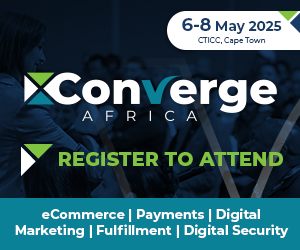If one considers these percentages in relation to the ever-increasing cost of acquiring new customers, the case for focussing more effort towards improving engagement, and building loyalty, suddenly becomes a lot stronger. Who doesn’t want their customers to buy more, promote more, and demonstrate more loyalty? If businesses can look beyond the cliché and see how truly valuable engaged customers are, then they will see how much value still lies in successful Customer engagement.
Fact: Highly engaged customers spend 300% more than the average shopper, account for 90% more frequent purchases, and are 5x more likely to choose the same brand for a future purchase.
So, as much as the term ‘customer engagement’ is frequently used, don’t let the buzz word stop the immense value it still has for your business.
What is customer engagement about?
According to HubSpot, customer engagement is the continued interactions occurring between a company and customer, offered by the company, chosen by the customer. Simply put, the choice to engage or disregard a message lies with the customer.
Sales pitches alone do not drive revenue. Creating awareness, building relationships, and sharing useful content are building blocks that should be in place before closing a deal. While these are sometimes difficult to quantify, incorporating these fundamentals within the business strategy are vital in achieving more active and engaged customers. High levels of customer engagement are an essential component.
Here are three ways for engaging your customers:
Keep it short and simple
‘If the French revolution was inspired by three words, then marketing copy should convince someone to buy a product in ten.’ As much as we like to share a detailed update with our audience, we know they’re not always waiting in anticipation to hear from us. With that in mind, ensure information and copy is both succinct and to the point.
Simply put, the goal with marketing copy should be getting readers to read the next sentence. The headline convinces someone to read the first sentence, which entices them to read the second, and so forth – right down to the offer and the call-to-action. Adding too much information dilutes the copy and the communication.
There are easy ways to achieve this. If there is an offer, lead with that. Coupons, discounts, and sneak peeks of new products are a great way to draw people in; everyone wants to be part of an exclusive club. It is also important to include a clear ‘call-to-action’. Call-to- actions (CTAs) act as a signpost that let customers know what to do next. Without a clear CTA, customers will likely abandon the message without completing the goal.
2. Striking landing pages increase conversion rates
Once visitors click through, the next big step is to convert them into leads or drive a conversion goal. Landing pages are a powerful tool for achieving this, and studies show that people remember 80% of what they see, only 20% of what they read, and about 10% of what they hear. Strong visuals will captivate and nudge audiences into acting.
How to achieve this:
- Consider the overall layout: Wow customers with eye-catching creatives that can heavily influence customers’ decisions.
- Help customers find the information they are looking for as quickly as possible. Design elements should be simple, familiar, intuitive, clean, and accessible.
- Select the right typography: Text should be easy to read – meaning body copy should be large enough and responsive. Use a complementary font for headings or accents, but avoid using more than three typefaces.
- Messaging: Do the most important pieces stand out? How does your messaging interact with the design? Is there a call to action or form to complete? Communicating clearly is essential for an optimized customer experience.
3. Harness the power of personalisation
Content personalisation is about more than adding in your customer’s first name. It enables brands to connect on a deeper level and send the right messages at the right time.
Example: Audrey is opted-in to receive SMSs from her favourite fashion retailer. They have just sent a message highlighting their latest winter range. But instead of sending her a generic offer, they have sent her this: “It’s cold out there, Audrey. Keep dry and stylish with our latest range of waterproof jackets”.
Not only did they use her name, and the weather in her state as personalisation conditions, but they have also offered her content based on previous purchases – in this case, jackets. By using the full scope and functionality of personalisation, an experience was created that is unique, relevant, and valuable to the customer.
Deepening customer relationships and improving engagement can dramatically increase value to the customer. By gradually introducing and implementing tactics to consistently create meaningful experiences, brands soon have a customer base that is more engaged and loyal than ever before.
 By Ayla Solomon, Marketing Lead at Mobiz, a dynamic marketing technology company.
By Ayla Solomon, Marketing Lead at Mobiz, a dynamic marketing technology company.










